Autism & PDD
Pervasive Developmental Disorders (PDDs) is a term that isn’t used too often in the medical field anymore. It’s actually been redefined as autism spectrum disorder (ASD). While the name has changed, the means for the disorders has relatively stayed the same. Meaning children who fall on the spectrum struggle with developmental issues such as socializing and communicating, or difficulties with routine changes, repetitive motions, and behavior. The official name change came in 2013 because the concept of having a spectrum is a more medically accurate way to diagnose children suffering from these types of disorders. If you believe your child may fall on the spectrum and want to set them up with a doctor who cares, visit Therapy Services of Greater New York.
Different types of PDD’s:
While PDD is no longer a widespread term, many medical professionals still refer to the related conditions the same. Since the introduction of the spectrum autism can be defined as “classic” or “atypical”. Atypical autism can also be referred to as Pervasive Developmental Disorders - Not Otherwise Specified (PDD-NOS). Children diagnosed with this usually fit some of the criteria for an autistic disorder, but not all of it. Their symptoms are milder and less frequent. Aside from that, your child could be diagnosed with one of the following PDD-NOS’s:
Asperger’s Syndrome - A child with this condition may have difficulties in social settings and with communicating. While they may struggle with that, they tend to have a higher functioning than most, as well as an extreme interest in certain topics.
Childhood Disintegrative Disorder - This is a rare condition that can be characterized by a child have very late developmental delays; around the age of 3. In this situation, your child may have a severe or sudden reversal of skills in areas such as language, social function, and motor skills. While it shares similarities, it is not considered autism.
Rett’s Syndrome - This disorder is a rare non-inherited genetic postnatal neurological. It is only found in girls and can lead to some severe impairments. This syndrome can affect a child's ability to speak, walk, eat, and breathe.
Symptoms:
Aside from having trouble with social communication and interaction, there are a few other symptoms to look out for when it comes to your child being on the autism spectrum. These symptoms include:
Avoiding eye contact
Inability to express their thoughts through language
Having a high-pitched or flat voice
Difficulties maintaining conversation
Inability to control their emotions
Repetitive behaviors
I.e. hand flapping, rocking back and forth, jumping, or twirling
Treatment:
Unfortunately, both the cause and cure of ASD’s has yet to be determined. This means that the goal of any treatment method you choose is to only improve the quality of your child's life. To ensure this, you’ll want to find out whether your child falls on the spectrum sooner rather than later. You can achieve this by having a doctor observe your child, as well as ask questions regarding their behavior. If after the observation you find that your child is on the ASD, you’ll want to find the right medication and therapy combination for your child's needs. Finding a therapist that specializes in your child's needs will only benefit them in the future when it comes time to improve upon certain socialization and other life skills.
At Therapy Services of Greater New York, we offer occupational and physical therapy services to children with special needs, ages 0 all the way up to 21! With Pediatric OT and Sensory Integration gym available, we can help your kids reach their fullest potential. If you’re interested in learning more, contact us today!
